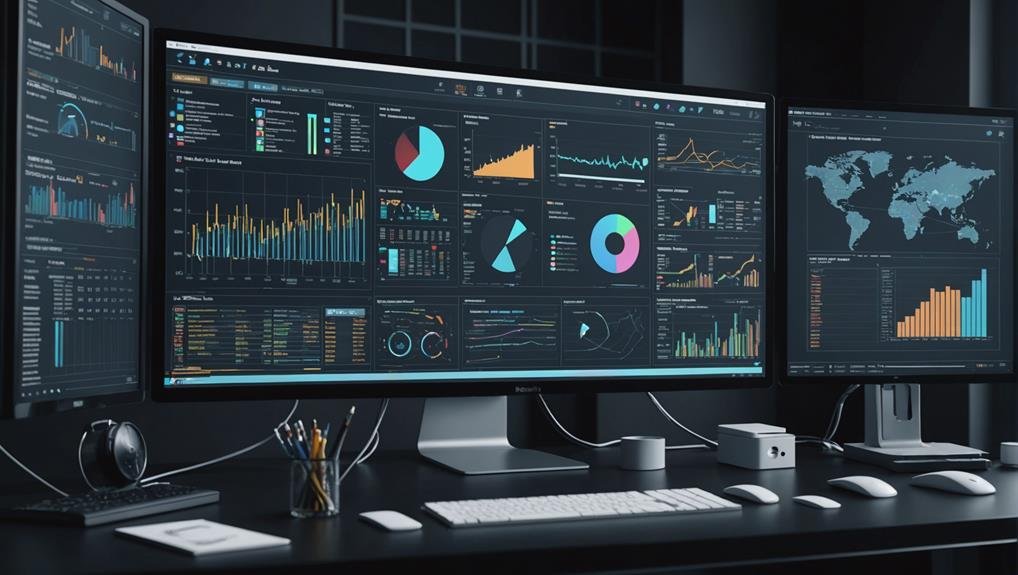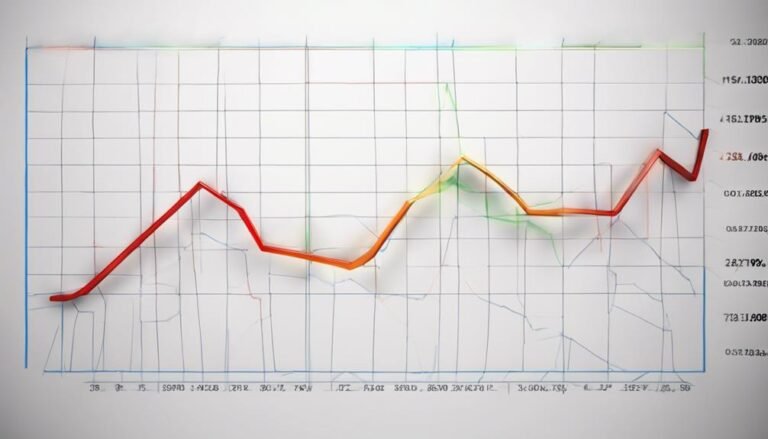Data Analytics: What It Is, How Its Used, and 4 Basic Techniques
Data analytics involves analyzing raw data to derive insights and improve decision-making. Techniques like descriptive, diagnostic, predictive, and prescriptive analytics are used for this purpose. These methods help in understanding past events, investigating reasons for occurrences, predicting future outcomes, and recommending actions based on insights. Data analytics enhances operational efficiency and aids in informed decision-making, benefiting various sectors such as healthcare and crime prevention. Exploring the world of data analytics reveals how these techniques drive strategic planning and facilitate better decision-making processes.
Key Takeaways
- Data analytics involves analyzing raw data to derive insights and optimize decision-making processes.
- It employs descriptive, diagnostic, predictive, and prescriptive analytics techniques for informed decisions.
- The data analysis process includes determining data requirements, collecting relevant data, and organizing it effectively.
- Types of data analytics include descriptive, diagnostic, predictive, and prescriptive analytics for strategic planning.
- Data analytics enhances operational efficiency, facilitates decision-making, and benefits various sectors like healthcare and crime prevention.
Definition and Overview of Data Analytics
Data analytics, as a fundamental science, involves the systematic analysis of raw data to derive meaningful insights and optimize decision-making processes. By employing various techniques such as descriptive, diagnostic, predictive, and prescriptive analytics, data analysts can draw accurate conclusions from the data at hand.
Descriptive analytics focuses on summarizing past events, while diagnostic analytics investigates why these events occurred. Predictive analytics looks towards forecasting future outcomes, and prescriptive analytics recommends actions to be taken based on the insights gained.
This scientific approach to data analysis guarantees that businesses can make informed decisions, optimize their performance, and drive efficiency in their operations.
Data Analysis Process
The essential approach to analyzing information to derive valuable insights and enhance decision-making is a fundamental aspect of the data analysis process. This process involves determining data requirements, collecting relevant data, organizing it effectively, and ensuring its accuracy through data cleansing.
Data cleansing focuses on identifying and correcting errors or inconsistencies in the data to improve its quality. Statistical analysis plays a vital role in this process by applying mathematical algorithms to analyze data sets, uncover patterns, and make predictions.
Types and Techniques of Data Analytics
Various approaches and methodologies are utilized in the field of data analytics to derive insights and inform decision-making processes. Descriptive analytics focuses on describing past events, while diagnostic analytics investigates understanding why they occurred.
Predictive analytics is essential for predictive forecasting, anticipating future events based on historical data patterns. This type of analytics enables organizations to plan ahead and make informed decisions.
Additionally, prescriptive analytics suggests specific actions to optimize outcomes, providing a roadmap for achieving desired results. Incorporating predictive forecasting and prescriptive actions into data analysis processes enhances the quality of decision-making and supports strategic planning efforts within various industries.
Importance and Applications of Data Analytics
In contemporary business environments, the application of data analytics plays a crucial role in enhancing operational efficiency and facilitating informed decision-making processes. Data analytics offers various benefits across different sectors, including healthcare and crime prevention, thereby positively impacting society.
By utilizing data analytics, organizations can reduce costs, gain a competitive edge, and make quick decisions based on data-driven insights. The societal impact of data analytics is evident in improved healthcare services through predictive analytics for disease outbreaks and personalized treatment plans. Additionally, in crime prevention, data analytics aids law enforcement agencies in identifying patterns and preventing criminal activities proactively.
Conclusion
To summarize, data analytics plays a vital role for organizations seeking to extract valuable insights from vast amounts of data.
By employing techniques such as descriptive, diagnostic, predictive, and prescriptive analytics, businesses can make informed decisions, optimize performance, and drive strategic planning.
The transformative impact of data analytics on contemporary business landscapes underscores its essential role in shaping the future of industries worldwide.







